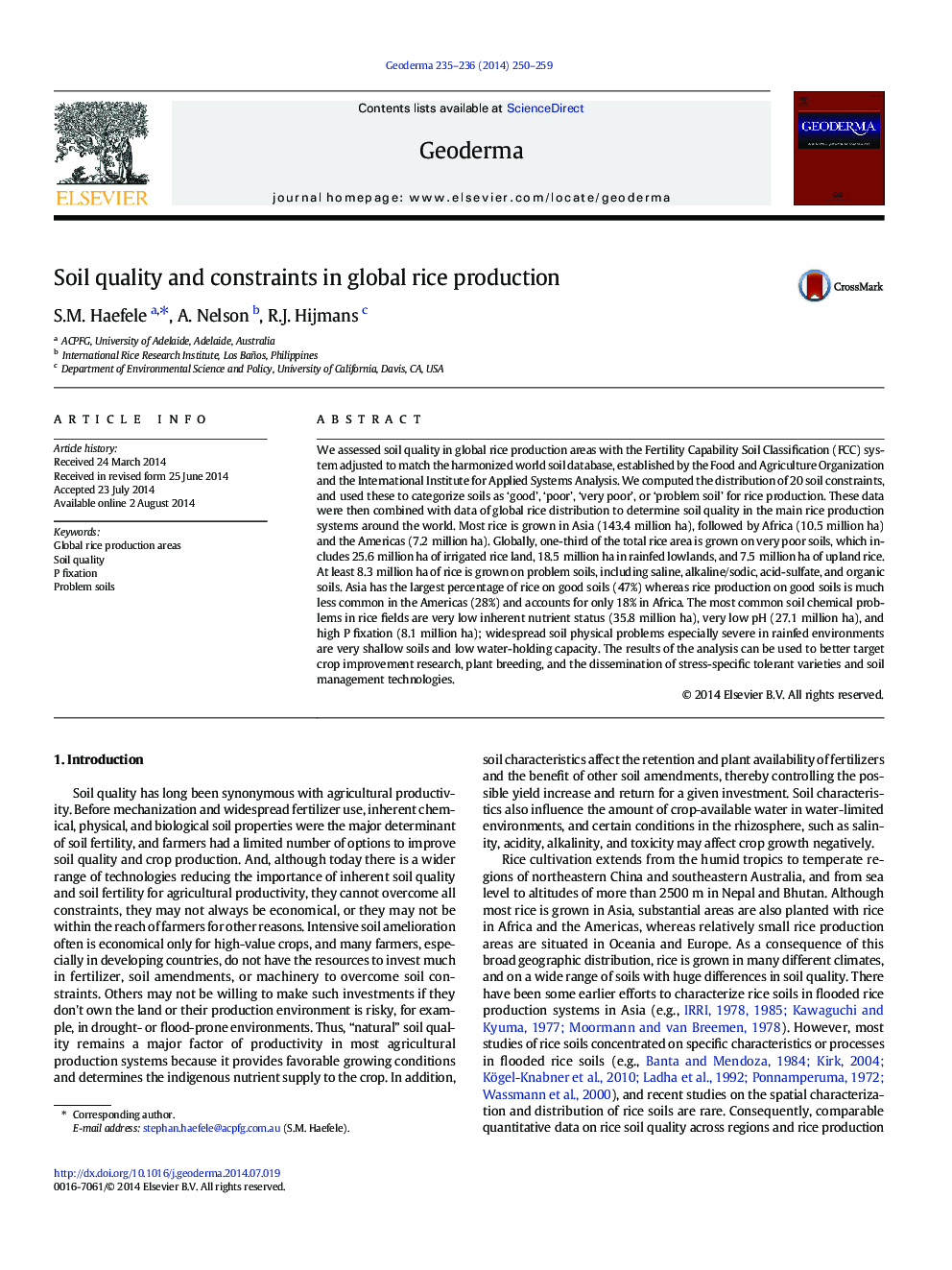| کد مقاله | کد نشریه | سال انتشار | مقاله انگلیسی | نسخه تمام متن |
|---|---|---|---|---|
| 4573324 | 1629468 | 2014 | 10 صفحه PDF | دانلود رایگان |
• We assessed soil quality in all rice production areas around the globe.
• Globally, one-third of the total rice area is grown on very poor soils.
• Asia has the largest percentage of rice on good soils, Africa the smallest.
• Common problems in rice soils are low nutrient status, low pH, and high P fixation.
• Study results could help to better target crop improvement and management research.
We assessed soil quality in global rice production areas with the Fertility Capability Soil Classification (FCC) system adjusted to match the harmonized world soil database, established by the Food and Agriculture Organization and the International Institute for Applied Systems Analysis. We computed the distribution of 20 soil constraints, and used these to categorize soils as ‘good’, ‘poor’, ‘very poor’, or ‘problem soil’ for rice production. These data were then combined with data of global rice distribution to determine soil quality in the main rice production systems around the world. Most rice is grown in Asia (143.4 million ha), followed by Africa (10.5 million ha) and the Americas (7.2 million ha). Globally, one-third of the total rice area is grown on very poor soils, which includes 25.6 million ha of irrigated rice land, 18.5 million ha in rainfed lowlands, and 7.5 million ha of upland rice. At least 8.3 million ha of rice is grown on problem soils, including saline, alkaline/sodic, acid-sulfate, and organic soils. Asia has the largest percentage of rice on good soils (47%) whereas rice production on good soils is much less common in the Americas (28%) and accounts for only 18% in Africa. The most common soil chemical problems in rice fields are very low inherent nutrient status (35.8 million ha), very low pH (27.1 million ha), and high P fixation (8.1 million ha); widespread soil physical problems especially severe in rainfed environments are very shallow soils and low water-holding capacity. The results of the analysis can be used to better target crop improvement research, plant breeding, and the dissemination of stress-specific tolerant varieties and soil management technologies.
Journal: Geoderma - Volumes 235–236, December 2014, Pages 250–259
